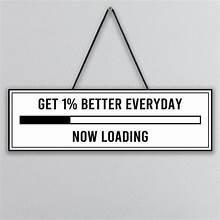
Inspired by sports
Esseen tyyppi: Yksilöessee / 2 esseepistettä.
Inspired by the Sport & Business project, I started to do some research about the possible differences between work communities and practitioners of sports organizations, even though they lead from a perspective. Today’s corporate management is increasingly changing to a coaching and towards a sport-like direction. Leadership puts more emphasis on leading people as individuals and developing the potential of individuals. I write this essay from the perspective of sports coaching and “in the eyes of an athlete”.
“It has been found that leadership of a sports team is possible with every aspect of any leadership function. A sports team coach has practically about 30 employees or equal managers who interact with him through constant interaction” Jalonen & Lampi 2012, 8-9. In a large company or sports club, there may be hundreds of individuals, but a direct management relationship with each manager can only be for a small group at a time. Working life and cutting-edge sports are all about the concept of professionalism. When high-level sport has become a professional at all levels, it is capable of being measured in the professional sport’s own labor market for the purpose of improving excellence.
Nowadays values are more and more guiding for the guardian. Each person has his or her own values, and the bottom line and subsequent consequences are willing to do their job. It is also important to understand what is prevalent in your organization, values and comparisons to your own personal values. The values will be chosen by the people in the organization. This will make each user aware of what they are and can do next in their work. The best values to guide the action.
Teams have their own rules of the game within the organization’s values. If the rules require either formal or informal. Clear rules of the game guide operations to a more productive and efficient outcome when everyone is working with the agreed upon things. Rules are not made unnecessarily because they are done, but they are designed to influence the simplest things to do and not to do. The group will shape its own rules, but only rules that were developed and agreed a long time ago will remain in the latest rules if they are found to be good and team-building.
Good coaching is about coaching people as individually as at the team / team level. To be successful in helping individuals, the coach needs to know that he or she is coaching. Coaching is a long-term development process, so both learn. Learning to choose the learner’s intrinsic motivation. In coaching, this is important when it comes to personal motivation and your own resources.
Athlete-Oriented Functional Activities The coach’s primary goal is to use, develop and utilize the athlete’s own resources. The focus is on the athlete, his or her resources and inner desire to learn. The athlete participates in the design, implementation and evaluation of all stages of the coaching process. In this way, he becomes more responsible for what he does and has a strong ownership of his sport.
In the sport, the central roles are known and interrupted because the sports users are known to be highly intrinsically motivated. A strong presence of feeling is seen as both a positive and a negative thing. You can choose more energy and want to work, but it is probably better and more leading. from an economic point of view. It is important that the manager is able to keep emotions separate from financial and administrative behavior.
Enthusiasm and passion are the driving forces in adult sports as well as in the workplace, at any level. Opportunity for one’s potential lies in passion, commitment, the right kind of goals, doing the best and taking responsibility. The coaching relationship in the community chooses to act and trust results in both acting in the best interests of each other. The coach and athlete understand the impact of their activities on the wider entity. Striving for the best requires boundaries and risk-taking. Learning new and striving for the best is possible if you are also allowed to fail and learn from it. Common choices are conscious and based on honesty and the highest level of individual expertise. This makes it possible to take responsibility for the decisions made. Both the coach and the athlete are applied in an atmosphere and a culture of action, thus respecting each other.



